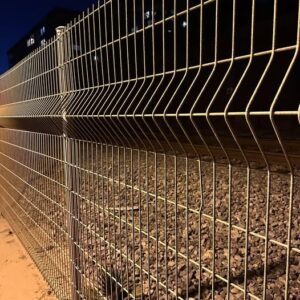10 Safest Places to Be if World War III Erupts
If global tensions ever escalated into a full-scale conflict, many would wonder where to stay safe. In a World War III scenario, it’s crucial to find places far from military targets, major economic hubs, and political alliances. The safest locations combine geographic isolation, self-sufficient resources, and a history of neutrality. While no place is completely risk-free, some countries are far better positioned to ride out global instability.
Here’s a list of ten of the safest spots, based on geography, neutrality, and sustainability.
1. New Zealand
Why It’s Safe: Remote, politically stable, and self-sufficient.
New Zealand sits far from major global powers and rarely engages in disputes. Its small population means fewer targets. Agriculture thrives, and the country runs mostly on hydro and geothermal energy. If World War III breaks out, New Zealand provides safety, food, and peace of mind.
2. Switzerland
Why It’s Safe: Neutral for centuries, highly prepared.
Switzerland has avoided wars for over 200 years. Mountains make invasions difficult, and almost every home has a bomb shelter. The country grows much of its own food and maintains a peaceful, neutral stance. In a global conflict, Switzerland could remain a secure refuge.
3. Iceland
Why It’s Safe: Isolated, sustainable, and non-militarized.
Iceland is an island nation with no standing army. It relies entirely on renewable energy from geothermal and hydropower. Its remote location and lack of strategic value make it unlikely to face direct attacks. Iceland’s isolation and sustainability make it ideal during World War III.
4. Antarctica
Why It’s Safe: Extreme isolation and military-free.
Though not a country, Antarctica is highly isolated. Only researchers live there temporarily, and the Antarctic Treaty bans military activity. Its harsh climate makes survival challenging, but the continent is far from conflict zones. For those prepared, Antarctica could be the ultimate safe haven.
5. Argentina
Why It’s Safe: Remote, self-sufficient, and agriculturally rich.
Argentina lies far from global power centers. It produces ample food and energy and remains largely neutral. The Andes provide natural protection, especially in southern regions. If conflict hits the Northern Hemisphere, Argentina could avoid major destruction.
6. Ireland
Why It’s Safe: Neutral, peaceful, and remote.
Ireland avoids military alliances like NATO and has remained largely free from modern conflicts. Positioned at Europe’s edge, it stays away from strategic targets. With strong food production, clean water, and a calm political climate, Ireland offers stability in uncertain times.
7. Canada (Remote Areas)
Why It’s Safe: Vast, resource-rich, and sparsely populated.
Canada’s remote regions are far from cities and military bases. Fresh water, forests, and farmland provide self-sufficiency. Despite NATO membership, its interior is largely unpopulated, making it difficult to target. Countryside areas offer survival potential during global conflict.
8. Tuvalu and Pacific Islands
Why It’s Safe: Tiny, isolated, and low-profile.
Tuvalu and islands like Samoa or Kiribati have no armies and little global significance. They grow their own food and rely on fishing. While isolation makes supplies challenging, these islands are shielded from global chaos and unlikely to face attacks.
9. Bhutan
Why It’s Safe: Peace-focused, mountainous, and independent.
Bhutan avoids global conflicts and prioritizes happiness and sustainability. Its Himalayan location provides natural defense, and local communities produce their own food. With no military alliances, Bhutan combines isolation with peace, making it a safe spot during war.
10. Chile
Why It’s Safe: Remote, stable, and self-reliant.
Chile stretches along South America’s west coast, protected by the Andes and the Pacific Ocean. It produces its own food and energy. Southern areas like Patagonia are remote and hard to reach, offering potential shelters if conflict escalates.
What Makes a Place Safe?
A truly safe location during global war meets several key criteria:
-
Distance from military action and major alliances.
-
Self-sufficient food and energy production.
-
Peaceful politics and stability.
-
Strong infrastructure and resilient communities.
Remote, self-reliant countries with low global involvement provide the best chance to avoid conflict.
Final Thoughts
No one hopes for World War III, but history shows peace is fragile. Planning ahead is smart. The ten places listed here offer protection through isolation, neutrality, and natural resources. While nothing is perfect, these locations provide the highest chance for survival. Think ahead, prepare wisely, and prioritize safety.





